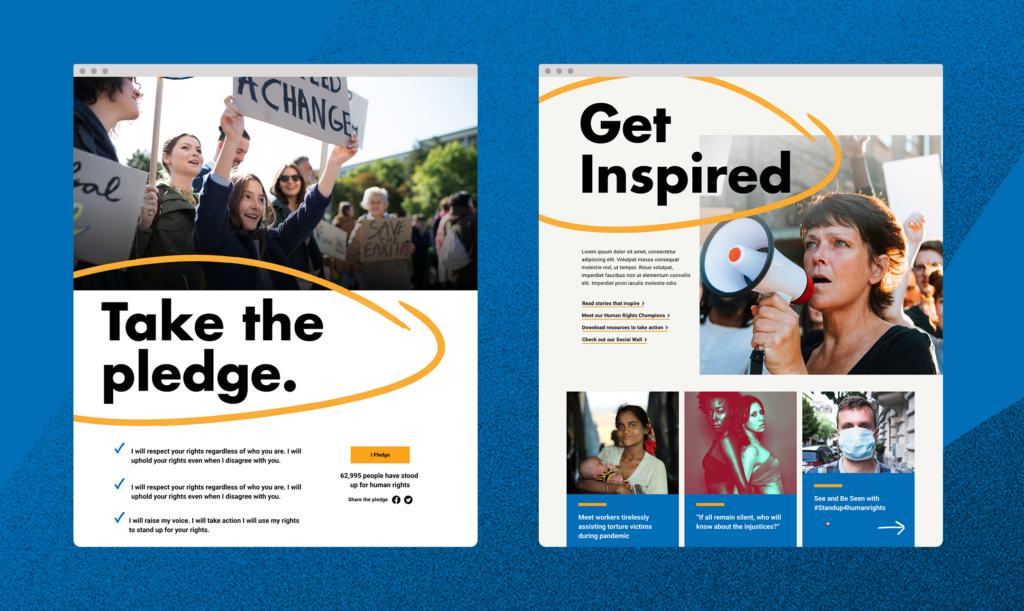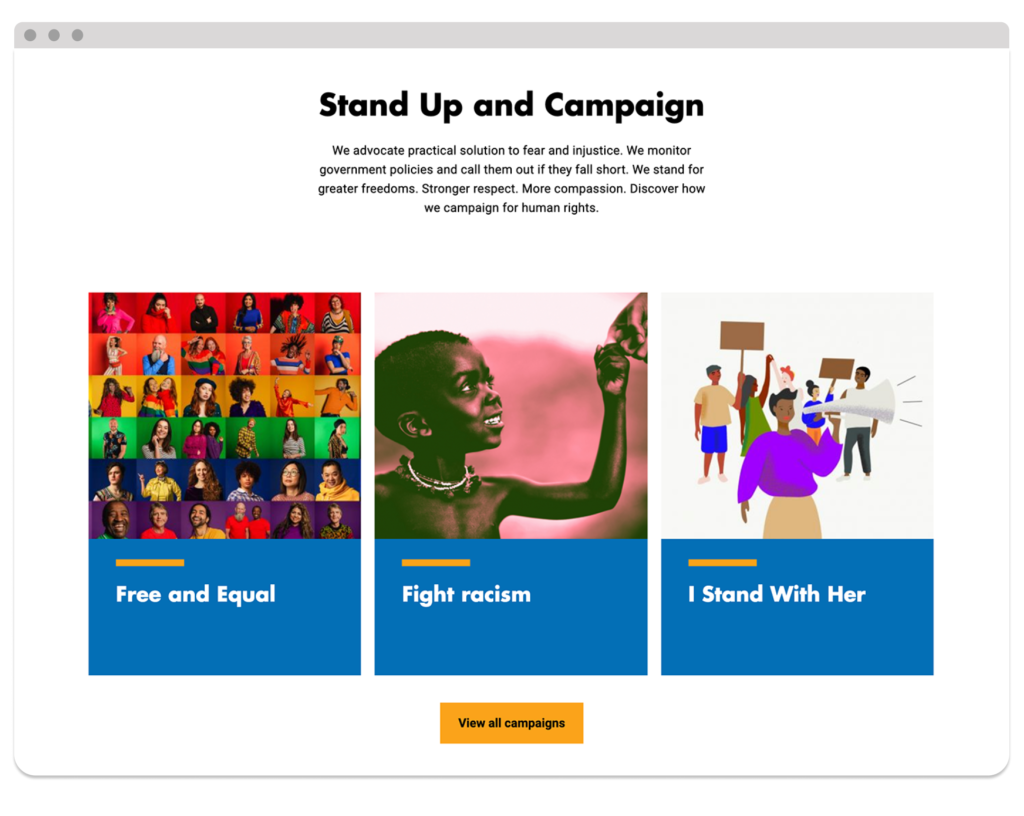At the time, they had three separate websites managed by separate teams within the organization. The content was vast, complex, and difficult for the user to navigate and access.
OHCHR’s primary audience is made up of individuals who work in the human rights sector – professionals who have a high tolerance when it comes to digging through complex content. Other audiences who frequent the site include high school or college students, looking for information for reports or projects on human rights. Because this group’s tolerance for sorting through dense content is much lower, it was crucial that every decision made would accommodate the goals and experiences of all visitors.
Assemble the right team
A project of this scale and complexity – involving 65k+ pages migrating from Sharepoint to Drupal 8 – required close collaboration over a period of many months from multiple teams with unique domain expertise. Chief among these stakeholders was our clients, the OHCHR communications team, who brought a deep understanding of the content requirements and the process for incorporating input from stakeholders across the organization.
We brought together and led a diverse team of experts from across the globe, with Blue State creating the product requirements, UX, and visual design. We teamed up with Axelerant, a team of Drupal specialists based in India, for the CMS architecture, migration strategy, and development. We also worked with Dovecot, a taxonomy consultancy based in Canada, and Dot-Connection, a content strategy agency based in France.
Don’t forget about findability
With an ever-growing amount of content on the web, ensuring findability of digital information is essential to successful website planning and design. Site visitors want to find the information they need quickly and easily. They also need the ability to browse and discover new information they may not have been explicitly looking for. Low findability is not only frustrating for users, but can undermine the performance and credibility of any site.
When we began our work with OHCHR, they had already engaged Dovecot and Dot-Connection for taxonomy and content strategy work. Because that work was in progress, it enabled us to tackle extensive content needs in collaboration with that team.
A robust taxonomy strategy was developed to bridge all areas of the site, including site search, related links, dynamic content pages, and other taxonomy-driven elements. As part of our work, we streamlined the previously disjointed user experience by bringing in large sets of human rights documents into the website, allowing them to be indexed and, in turn, found.
Lists of topics were previously long and difficult to scan, without white space and guiding UI or faceted search capacity. The new design works to make complex information easier to navigate, both visually and technically.


